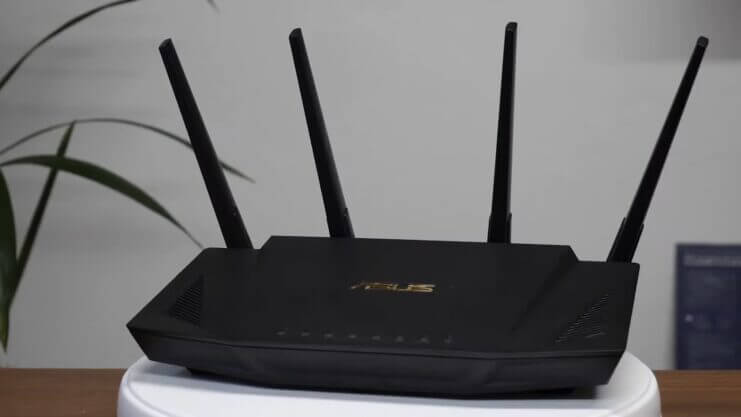Yes, Wi-Fi can slow down with more users. This is because Wi-Fi bandwidth is shared among all connected devices. When there are more devices connected, each device gets a smaller share of the bandwidth. This can lead to slower speeds for all devices.
Does Wi-Fi Speed Decline with More Users?
Yes, Wi-Fi speed can decline with more users connecting to the network. When multiple devices are connected and actively using the Wi-Fi network simultaneously, the available bandwidth is shared among them. This means that the total amount of bandwidth available for each device decreases as more devices join the network.
As a result, the data transfer rate for each device may decrease, leading to slower Wi-Fi speeds. The more users that connect and utilize the network simultaneously, the greater the strain on the available bandwidth, and the more pronounced the slowdown in speed can become.
Network congestion occurs when the demand for bandwidth exceeds the capacity of the network. This congestion can lead to increased latency, packet loss, and slower data transfer rates for all users connected to the Wi-Fi network.
Factors that Can Affect Wi-Fi Speed with More Users
Several factors can affect Wi-Fi speed when more users connect to the network simultaneously:
- Bandwidth sharing: The available bandwidth is divided among all connected devices. As more users join the network and consume bandwidth, the amount of bandwidth available to each device decreases, leading to slower speeds.
- Network congestion: With more users accessing the network, the overall network congestion increases. This congestion can result in higher latency and slower data transfer rates for all connected devices.
- Router capacity: The capacity of the Wi-Fi router plays a significant role. If the router is not capable of handling a large number of simultaneous connections or has limited processing power, it may struggle to efficiently distribute bandwidth, causing slower speeds.
- Channel interference: Wi-Fi operates on different channels, and neighboring networks or nearby electronic devices can cause interference. As more users connect to the network, the chances of channel interference increase, impacting Wi-Fi performance and resulting in slower speeds.
- Network equipment limitations: The capabilities of the network equipment, such as the router and network switches, can impact Wi-Fi speed. Older or lower-quality equipment may not support high-speed connections or handle multiple users efficiently, leading to slower speeds.
- Signal strength and coverage: The distance between the Wi-Fi router and the connected devices, as well as physical obstructions, can affect signal strength and coverage. Users farther away from the router or behind obstacles may experience weaker signals, leading to slower speeds.
- Device capabilities: The individual devices connected to the Wi-Fi network also play a role. Older or slower devices may not be able to achieve the maximum speed offered by the network, affecting overall Wi-Fi performance.
How Many Devices Should You Have on Your Wi-Fi?
| Router Capacity | Typical Range of Devices Supported |
|---|---|
| Basic Router (2.4 GHz) | 10-15 devices |
| Dual-Band Router | 20-30 devices |
| High-End Router | 50+ devices |
| Mesh Wi-Fi System | 100+ devices (distributed across nodes) |
Factors Influencing Device Limit:
| Factor | Details |
|---|---|
| Internet Plan | Standard 100 Mbps plan supports 10-15 devices for browsing and streaming. |
| Device Usage | Streaming 4K video can require 25 Mbps per device, impacting the total count. |
| Network Load | Peak hours may reduce device capacity due to increased network congestion. |
| Quality of Devices | Older or low-quality devices may strain the network, limiting connections. |
| Wired Connections | Wired devices reduce strain on Wi-Fi; essential for stable connections. |
| Mesh Networks | Mesh systems distribute load, supporting higher device counts efficiently. |
Factors Influencing Wi-Fi Performance
- Distance: The distance between the Wi-Fi router and the connected devices affects signal strength. The farther the distance, the weaker the signal and the slower the connection.
- Interference: Other electronic devices like microwaves, cordless phones, and neighboring Wi-Fi networks can cause interference and degrade Wi-Fi performance.
- Obstructions: Physical barriers like walls, floors, and furniture can block or weaken Wi-Fi signals, resulting in reduced performance.
- Bandwidth: The available bandwidth from your internet service provider (ISP) determines the maximum speed of your Wi-Fi connection. If you have a slow internet connection, it will impact your Wi-Fi performance.
- Network congestion: When multiple devices connect to the same Wi-Fi network and use it simultaneously, network congestion can occur, leading to slower speeds for all users.
- Wi-Fi standards: The Wi-Fi standard supported by your router and devices can impact performance. Upgrading to newer standards like Wi-Fi 6 (802.11ax) can provide faster speeds and better overall performance.
- Router capabilities: The quality and capabilities of your Wi-Fi router, such as its processing power and antenna design, can affect the range and speed of your Wi-Fi network.
- Number of connected devices: The more devices connected to a Wi-Fi network, the more the available bandwidth gets divided, leading to slower speeds for each device.
What is Bandwidth
Bandwidth refers to the maximum amount of data that can be transmitted over a network or communication channel within a given period. It is commonly measured in bits per second (bps) or a higher unit like kilobits per second (Kbps), megabits per second (Mbps), or gigabits per second (Gbps). Bandwidth represents the capacity or speed at which data can be transferred.
In the context of Wi-Fi or internet connections, bandwidth determines the maximum data transfer rate between a user’s device and the network. A higher bandwidth means a larger amount of data can be transmitted in a shorter time, resulting in faster internet speeds and smoother data transmission. Bandwidth is allocated by Internet service providers (ISPs) to customers based on their subscription plans and network infrastructure capabilities.
How Does Bandwidth Affect Wi-Fi Speed?

- Bandwidth plays a crucial role in determining Wi-Fi speed. The available bandwidth represents the maximum capacity for data transmission between the Wi-Fi router and connected devices. The higher the bandwidth, the more data can be transferred in a given period, resulting in faster Wi-Fi speeds.
- When a user performs activities like browsing the internet, streaming videos, or downloading files, data is sent and received between the device and the router. The speed at which this data can be transmitted is limited by the available bandwidth.
- If the bandwidth is limited, the data transfer rate will be lower, leading to slower Wi-Fi speeds. For example, if multiple devices are simultaneously using the Wi-Fi network and competing for the limited available bandwidth, each device may experience a decrease in speed.
Conclusion
In conclusion, Wi-Fi speed can be affected when more users connect to the network simultaneously. Factors such as bandwidth sharing, network congestion, router capacity, channel interference, network equipment limitations, signal strength, and device capabilities all play a role in determining the impact on Wi-Fi speed.
References:
https://www.rango.net/blog/does-your-wifi-slow-down-with-more-users
https://www.makeuseof.com/does-connecting-too-many-devices-slow-down-wifi/
Hello, I’m Herman C. Miller, the founder of InternetPKG.com, your ultimate destination for all things Mobile Internet and Telecommunication Services. With a BSc in Telecommunication Services and over 6 years at AT&T, my passion for the industry led to this platform. At InternetPKG.com, we prioritize keeping you informed with the latest package offers, ensuring our content stays current. Our team, including a dedicated Internet Package and Mobile Data Plans Researcher, tirelessly researches emerging trends, identifies market opportunities, and provides expert product recommendations.
